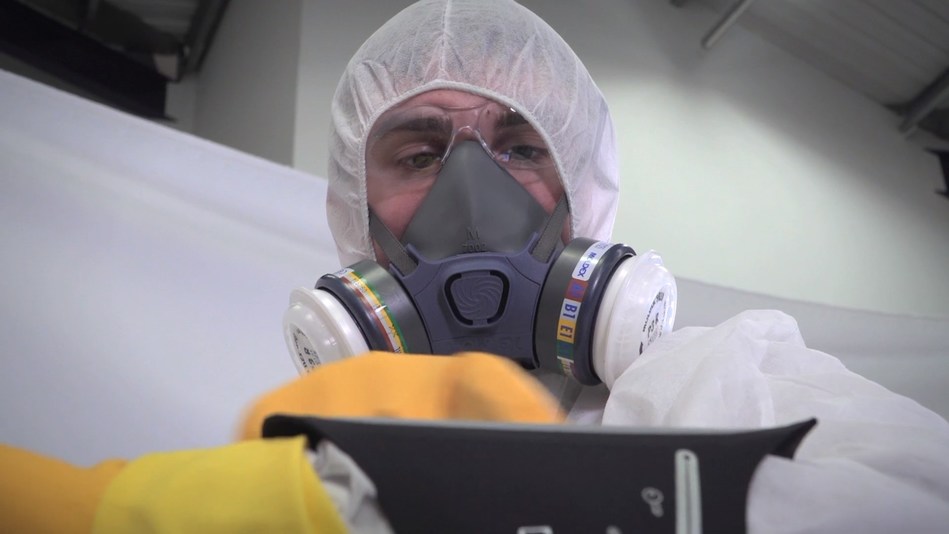Keeping People Safe in Hazardous Environments Prompted Companies REACT Engineering
World-first technology designed to keep people safe in highly hazardous environments has been developed by a collaboration of two companies.
Teams from UK-based REACT Engineering and Createc overcame working remotely through the COVID-19 lockdown to complete their pioneering system.

REACT Engineering owned the problem, and worked with Createc on the technology which would help provide the solution. Both companies have proven experience in solving some of the world’s most complex industrial challenges.
The result is ALARP Angel technology which allows a task to be fully defined, planned, rehearsed and executed in a dynamic highly hazardous environment.
The ALARP Angel software, which maximises operations and minimises risks, makes a task safer, faster, and cheaper to deliver, and can be used in a range of environments across different industries.
Recommended AI News: KPMG Announces Dynamic Risk Assessment Framework for Organizations Planning to Reopen Their Workplaces
The system, developed in a tight 12-month timescale as part of an industry challenge, gives added value by covering the full lifecycle of a project – the characterisation of an environment using a range of high-tech tools, training in VR and, if appropriate, a mock-up environment, and live real-time monitoring while a task is executed.
All the information is stored electronically in the ALARP Angel software and the way of working means risk to operators is minimised as:
- hazardous environments have been fully characterised using the latest high-tech tools and technology
- full training has been carried out without entering the hazardous environment – by using VR technology and mock-up environments where appropriate
- live-monitoring technology means any change in the environment is communicated from a supervisor to an operator via a wearable device while they are carrying out the task which leads to faster, fully-informed decision making
Costs are kept down because the tasks can all be rehearsed in virtual and mock-up environments.
And operations are maximised because with the live information available from the supervisor throughout the task the operator is able to concentrate on the executing the job, and if there’s a change in environment, exit or switch to another, safer task.
Recommended AI News: Covariant “Brain” Heads into New Era of AI Robotics
ALARP Angel can be modified to address any measurable or location based hazard, making it applicable to a wide variety of scenarios in a range of industries.
It can independently track multiple operators in a busy environment using Createc’s SLATE technology developed for the Ministry of Defence. And it can also track operators at any working height.
In the nuclear decommissioning environment characterisation is carried out using Createc’s proven N-Visage® system which has been commercially deployed at Sellafield in Cumbria, and extensively at the Fukushima Daiichi site in Japan.
The ALARP Angel technology has been developed through a Small Business Research Initiative (SBRI) to protect nuclear decommissioning operators.
The competition, organised by Innovate UK and funded by Sellafield Ltd, was run in two stages with the final stage being concluded after COVID-19 lockdown.
Chris Woolhouse of REACT Engineering, who led the project, said: “The funded competition gave the two companies – REACT Engineering and Createc – the opportunity to collaborate and use the skills and expertise within both companies to develop this technology.
“The focus of ALARP Angel was to create a platform for managing tasks and easily link different technologies throughout the lifecycle of that task.
“We also wanted to make sure we used flexible technology which is just as applicable in other industries, such as oil and gas, nuclear decommissioning, military, or any emergency response where individuals are at risk from potential hazards.”
David Clark, Createc’s operations director, said: “Through characterisation, planning and training, the ALARP Angel software enables people to work in a way which minimises risk and optimises efficiency of carrying out tasks.
“It’s about planning tasks and training people to carry out those tasks in a way which is safer, faster and cheaper.”
Recommended AI News: Rubicon Raises $1.25 Billion Funding to Boost Innovation and Drive New Partnerships

Comments are closed, but trackbacks and pingbacks are open.